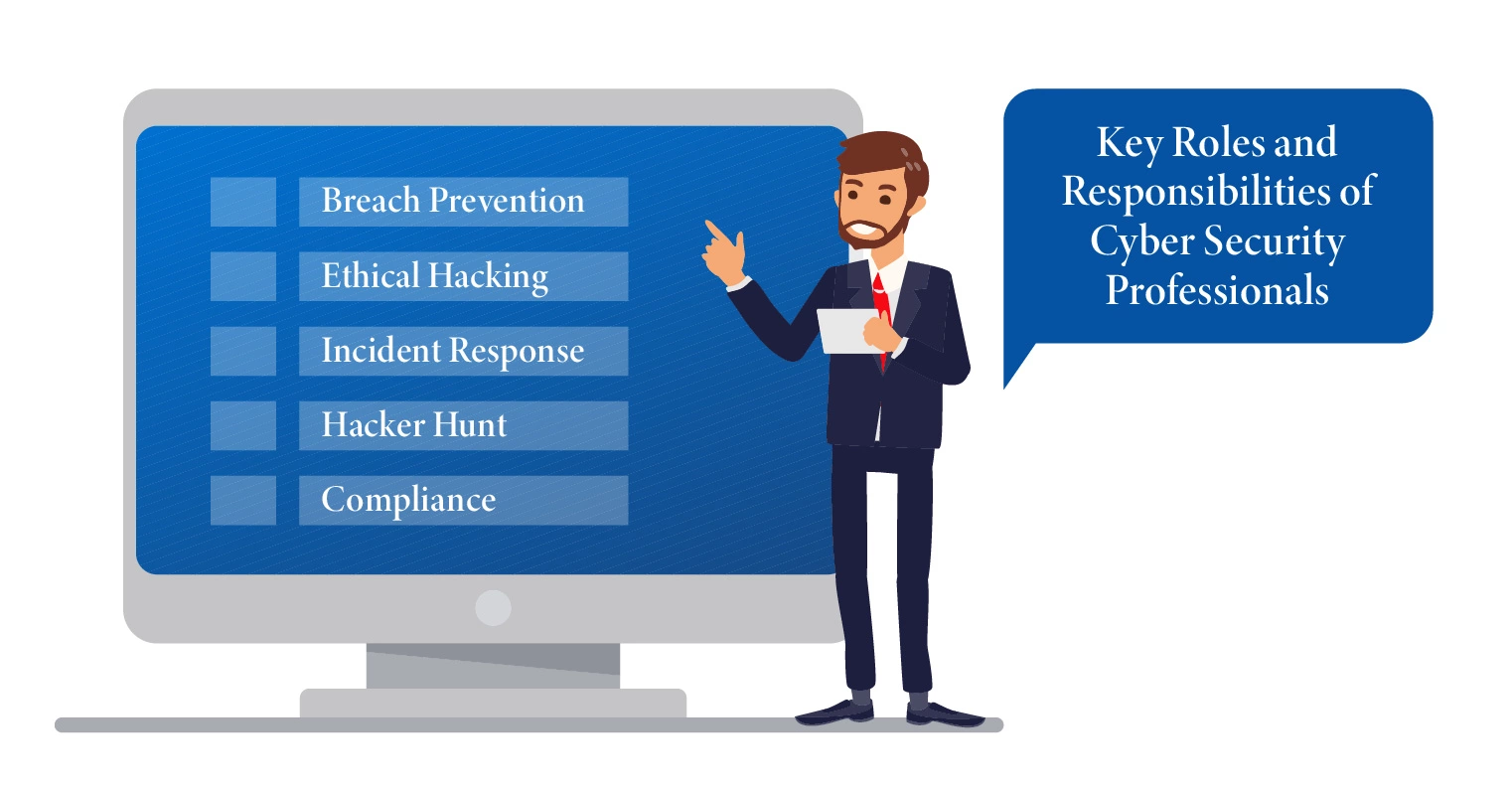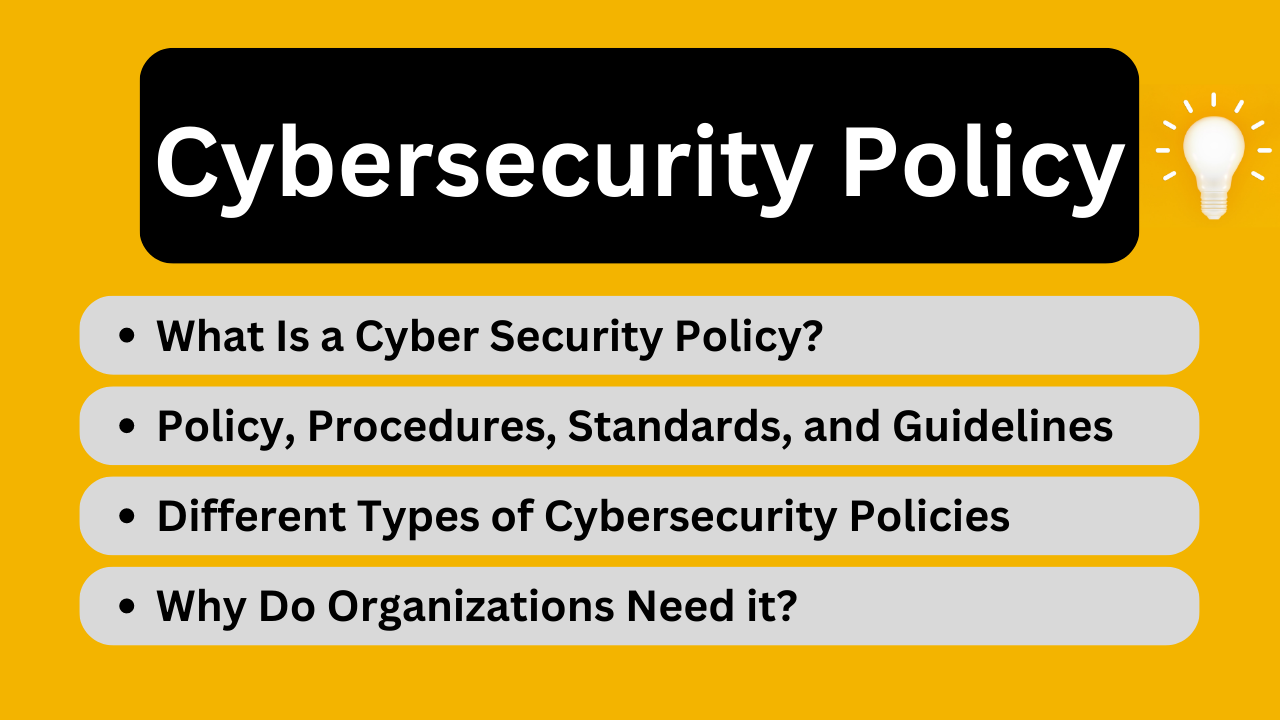Introduction
Developing a cybersecurity culture within an organization is no longer a choice; it is an absolute necessity in today’s digital age. With the increasing number of cyber threats and the potential devastating consequences of a data breach, organizations need to proactively prioritize cybersecurity and establish a culture that promotes awareness, diligence, and accountability at all levels.
But who is ultimately responsible for developing and nurturing this cybersecurity culture? The answer lies in the collective efforts of various stakeholders within the organization. It is a shared responsibility that requires collaboration, communication, and a commitment to protecting sensitive information.
In this article, we will explore the key players who play a crucial role in building a strong cybersecurity culture. From leadership and the IT department to employees, human resources, legal, compliance, and information security teams, each has a distinct role to play in promoting a culture of cybersecurity awareness and best practices.
By understanding the roles and responsibilities of each stakeholder, organizations can take a proactive approach to cybersecurity and create an environment where cybersecurity is embedded in the DNA of the organization. Let’s delve into each stakeholder’s role and explore how they can contribute.
The Role of Leadership
Leadership plays a critical role in establishing and fostering a cybersecurity culture within an organization. Without their commitment and active involvement, it is challenging to create a culture of security awareness and compliance.
Firstly, leaders need to set a clear tone at the top by actively promoting the importance of cybersecurity and demonstrating their commitment to it. This involves regularly communicating the significance of cybersecurity to all employees and making it a priority in organizational goals and strategies.
Leaders are also responsible for allocating resources and investing in cybersecurity measures. By allocating sufficient budget and IT resources, leaders can provide the necessary tools and technologies to safeguard the organization’s digital infrastructure.
Furthermore, leaders must lead by example and adhere to cybersecurity best practices themselves. When leaders prioritize security and follow recommended protocols, it creates a ripple effect throughout the organization. Employees are more likely to take cybersecurity seriously when they see their leaders actively practicing what they preach.
Another crucial role of leadership is to support employee training and provide ongoing education on cybersecurity. By fostering a learning environment and investing in regular training programs, leaders ensure that employees are equipped with the knowledge and skills needed to identify and mitigate cybersecurity risks.
Finally, leadership needs to establish a culture of accountability when it comes to cybersecurity. Leaders should enforce policies and procedures that hold individuals accountable for their actions or negligence related to cybersecurity. This sends a clear message that cybersecurity is everyone’s responsibility and that failure to adhere to security protocols may result in consequences.
Overall, leadership sets the foundation for a strong cybersecurity culture by championing security efforts, investing in resources, leading by example, supporting employee training, and establishing accountability. Their active involvement and commitment have a profound impact on shaping the organization’s cybersecurity culture.
The IT Department’s Responsibility
The IT department plays a crucial role in developing and maintaining a strong cybersecurity culture within an organization. Their responsibility lies in implementing and managing the technical aspects of cybersecurity to ensure the security and integrity of the organization’s digital infrastructure.
First and foremost, the IT department is responsible for implementing robust security measures and protocols. This includes setting up firewalls, intrusion detection systems, and encryption mechanisms to protect the organization’s networks and systems from external threats.
Additionally, the IT department must regularly monitor and analyze system logs and network traffic to identify any suspicious activities or potential security breaches. By proactively detecting and responding to security incidents, they can minimize the damage caused by cyber attacks.
Furthermore, the IT department must stay abreast of the latest cybersecurity trends, threats, and vulnerabilities. They need to continuously update their knowledge and skills to ensure they are equipped to address emerging security risks effectively. This involves attending industry conferences, participating in training programs, and staying connected with cybersecurity communities. In order to foster a strong cybersecurity culture, understanding and implementing Cross-Domain Identity Management (SCIM) is crucial for streamlining user identity information across various platforms, thereby enhancing the organization’s overall security posture.
Another important responsibility of the IT department is to enforce security policies and procedures. They must work closely with other departments, such as HR and legal, to ensure that security policies are communicated effectively and implemented throughout the organization.
In addition to technical aspects, the IT department needs to provide regular cybersecurity awareness training to employees. They should educate employees about common threats, such as phishing and social engineering, and teach them how to identify and respond to such attacks. By empowering employees with knowledge, the IT department helps create a human firewall against cyber threats.
Lastly, the IT department should conduct regular security audits and vulnerability assessments to identify and address any weaknesses in the organization’s security infrastructure. By proactively identifying vulnerabilities, they can take the necessary steps to patch or mitigate them, reducing the organization’s overall risk.
In summary, the IT department plays a critical role in establishing and maintaining a strong cybersecurity culture by implementing robust security measures, monitoring for threats, staying updated on cybersecurity trends, enforcing security policies, providing employee training, and conducting security audits. Their technical expertise and proactive approach are essential for safeguarding the organization’s digital assets.
Employee Awareness and Training
Employees are at the front lines of an organization’s cybersecurity defense. It is crucial for every employee to have a strong awareness of cybersecurity risks and best practices to minimize the chances of a security breach. Therefore, employee awareness and training are vital components of developing a cybersecurity culture.
The first step in employee awareness is ensuring that all employees understand the importance of cybersecurity and the potential impact of a security breach. This can be achieved through regular communication and awareness campaigns that highlight the risks associated with cyber threats and emphasize the role each employee plays in maintaining a secure environment.
Training programs should be provided to educate employees about common cybersecurity threats, such as phishing attacks, malware, and social engineering. Employees should be trained on how to identify these threats, what actions to take and what to avoid, and how to report suspicious activities. Regular training sessions, both in-person and through online tools, can help reinforce knowledge and keep employees updated on the evolving threat landscape.
In addition to general cybersecurity training, specialized training may be required for employees with access to sensitive data or those in IT-related roles. These individuals should receive advanced training on topics such as secure coding practices, data encryption, and incident response protocols.
Simulated phishing exercises can also be conducted to assess and improve employees’ ability to recognize and respond to phishing emails. These exercises allow organizations to identify vulnerable areas and provide targeted training to address any gaps.
Moreover, organizations should encourage a culture of reporting and communication when it comes to cybersecurity incidents. Employees should feel comfortable reporting potential issues or suspicious activities to the appropriate department, such as the IT help desk or the security team. Rewarding and recognizing employees for their vigilance can further encourage a proactive cybersecurity mindset.
Regular reminders and updates on cybersecurity best practices should be communicated to employees through various channels, such as company newsletters, intranet portals, or digital signage. These reminders can reinforce key concepts and help employees stay vigilant and up to date on evolving cybersecurity threats.
Overall, employee awareness and training are essential for creating a strong cybersecurity culture. By equipping employees with the knowledge and skills to identify and respond to security threats, organizations can significantly reduce the risk of a cybersecurity incident.
Human Resources’ Involvement
Human Resources (HR) plays a significant role in developing and maintaining a strong cybersecurity culture within an organization. HR’s involvement is crucial in ensuring that the right policies, procedures, and practices are in place to promote cybersecurity awareness and responsible behavior among employees.
Firstly, HR can help establish and enforce cybersecurity policies and procedures throughout the organization. They can work closely with leadership, IT, and legal teams to develop comprehensive policies that outline the expected behaviors and actions related to cybersecurity. HR can also ensure that these policies are communicated effectively, and employees receive appropriate training on them.
HR is responsible for the onboarding process of new employees, and cybersecurity training should be incorporated into their orientation. By educating new hires about the organization’s cybersecurity practices from the very beginning, HR can instill a strong cybersecurity awareness in employees from day one.
HR can also collaborate with IT to ensure that employees receive the necessary access permissions based on their job roles. This involves conducting regular access reviews and revoking unnecessary access rights to reduce the risk of unauthorized access to sensitive information.
In terms of employee behavior, HR can be involved in promoting and incentivizing good cybersecurity practices. This can include recognizing employees who consistently demonstrate adherence to cybersecurity protocols, providing rewards for participating in cybersecurity awareness programs, or incorporating cybersecurity performance metrics into employee evaluations. By aligning cybersecurity with performance incentives, HR can encourage a culture of responsible cybersecurity behavior.
In the event of a security incident or data breach, HR plays a critical role in incident response and managing the aftermath. They are responsible for guiding employees on proper communication protocols, notifying affected individuals or authorities as necessary, and providing support and resources for affected employees.
Furthermore, HR can conduct regular employee surveys or feedback sessions to gauge the effectiveness of cybersecurity training and awareness programs. By gathering insights and feedback, HR can identify areas that require improvement and develop targeted initiatives to address any gaps. This ongoing evaluation and improvement can help keep cybersecurity practices up to date and aligned with the organization’s evolving needs.
In summary, HR’s involvement in developing a cybersecurity culture is crucial. By working closely with leadership, IT, and other departments, HR can ensure that the right policies, procedures, and training programs are in place to promote cybersecurity awareness, responsible behavior, and incident response within the organization.
Collaboration with Legal and Compliance
Collaboration between the cybersecurity team and the legal and compliance departments is crucial to developing a robust cybersecurity culture within an organization. Legal and compliance professionals play a vital role in ensuring that the organization meets its legal obligations and industry regulations in relation to cybersecurity.
Firstly, legal and compliance professionals can help assess and interpret relevant laws, regulations, and contractual obligations related to cybersecurity. They are responsible for staying up to date with changes in legislation and ensuring that the organization’s cybersecurity practices align with the legal requirements.
Collaboration with legal and compliance is essential when establishing incident response plans and breach notification procedures. These professionals can provide guidance on legal requirements and obligations in the event of a security incident, including communicating with affected parties, regulatory authorities, and law enforcement, if necessary.
Legal and compliance professionals can also assist in reviewing and developing effective cybersecurity policies and procedures. They play a critical role in identifying potential legal risks or liability issues and ensuring that cybersecurity practices are aligned with the organization’s legal obligations.
In addition, legal and compliance professionals can contribute to the development of employee training programs. By providing guidance on legal obligations and industry best practices, they can ensure that the training content covers all necessary legal aspects of cybersecurity.
Collaboration between legal and compliance departments and the cybersecurity team is also important when conducting internal investigations into potential cybersecurity incidents or breaches. Working together, they can ensure that any evidence collected is admissible and that investigations are conducted in a manner that preserves the organization’s legal rights.
Furthermore, legal and compliance professionals play a role in managing third-party relationships and contracts. They can help assess the cybersecurity measures of vendors and partners to ensure that they meet the organization’s standards and legal requirements. This collaboration helps mitigate the risk of a cybersecurity incident through third-party relationships.
Lastly, legal and compliance professionals can assist in conducting regular audits and assessments of the organization’s cybersecurity practices. They can provide guidance on compliance frameworks, such as ISO 27001 or the General Data Protection Regulation (GDPR), and help identify areas where the organization may be non-compliant.
In summary, collaboration with legal and compliance departments is essential for developing a comprehensive cybersecurity culture. By working together, cybersecurity teams can ensure that the organization’s practices align with legal requirements, industry regulations, and best practices. This collaboration helps mitigate legal risks, enhances incident response planning, and ensures that cybersecurity practices are in line with the organization’s legal obligations.
The Role of Information Security Teams
Information security teams play a vital role in developing and maintaining a strong cybersecurity culture within an organization. They are responsible for managing and implementing the technical aspects of cybersecurity and ensuring the protection of sensitive information.
One of the main responsibilities of the information security team is to assess and mitigate risks to the organization’s digital assets. They conduct regular risk assessments to identify vulnerabilities and recommend appropriate controls and countermeasures. By addressing these risks, they help safeguard the organization’s systems, networks, and data from potential threats.
Information security teams are also responsible for implementing and monitoring security controls. They configure and manage firewalls, intrusion detection systems, and other security tools to prevent unauthorized access and detect any potential breaches. Monitoring systems and analyzing security logs allow them to identify and respond to security incidents promptly.
Furthermore, information security teams are at the forefront of incident response and forensic investigations. In the event of a cybersecurity incident, they take immediate action to contain and mitigate the damage. They conduct thorough investigations to understand the root cause of the incident, gather evidence, and recommend measures to prevent similar incidents in the future.
Information security teams also play a critical role in educating and training employees on cybersecurity best practices. They develop and deliver training programs that empower employees to recognize and respond to security threats effectively. By raising awareness and providing guidance, they enable employees to become active participants in maintaining a secure environment.
In addition, information security teams stay updated on the latest cybersecurity threats, trends, and industry developments. They continuously research and monitor the evolving threat landscape to identify emerging risks and vulnerabilities. This knowledge enables them to proactively implement appropriate security measures and keep the organization ahead of potential threats.
Collaboration with other departments is also crucial for information security teams. They work closely with IT, legal, compliance, HR, and other stakeholders to develop and enforce cybersecurity policies, procedures, and guidelines. This collaboration ensures a cohesive approach towards cybersecurity and promotes a culture of security awareness and compliance throughout the organization.
Lastly, information security teams play a vital role in assessing and selecting appropriate cybersecurity technologies and solutions for the organization. They evaluate vendor products and services and make recommendations based on the organization’s specific needs and risk appetite. By implementing robust security solutions, they enhance the organization’s overall cybersecurity posture.
In summary, information security teams are responsible for assessing risks, implementing security controls, responding to incidents, educating employees, staying updated on cyber threats, collaborating with other departments, and selecting appropriate cybersecurity technologies. Their expertise and efforts are essential in developing and maintaining a strong cybersecurity culture within an organization.
Creating a Culture of Accountability
Creating a culture of accountability is crucial for developing a strong cybersecurity culture within an organization. When individuals are accountable for their actions and understand the consequences of their behavior, it promotes a sense of responsibility and a commitment to cybersecurity best practices. Here are some key elements to consider when fostering a culture of accountability:
Clear Policies and Procedures: Establishing clear and well-defined cybersecurity policies and procedures is essential. These documents should outline the expected behaviors, responsibilities, and consequences for non-compliance. When employees are aware of the rules and understand the reasons behind them, they are more likely to take ownership of their actions.
Training and Education: Providing comprehensive training and education on cybersecurity is crucial in promoting accountability. Employees should receive regular training sessions that cover topics such as password security, phishing awareness, data handling practices, and incident reporting. By equipping employees with the knowledge and skills to make informed decisions, they become accountable for their actions.
Leadership Example: Leaders should lead by example and demonstrate a strong commitment to cybersecurity. When leaders prioritize security and adhere to policies and procedures, employees are more likely to do the same. Leaders should also hold themselves accountable and be transparent about the organization’s cybersecurity efforts.
Reward Systems: Implementing a reward system that recognizes and rewards individuals for their cybersecurity efforts can reinforce a culture of accountability. This could include acknowledging employees who report security incidents or follow best practices, providing incentives for participating in cybersecurity awareness activities, or incorporating cybersecurity into performance evaluations.
Open Communication: Foster an environment where employees feel comfortable reporting security incidents, sharing concerns, and offering suggestions. Encourage an open-door policy where employees can seek guidance and support without fear of retribution. When employees feel heard and valued, they are more likely to take responsibility for their actions and report potential security vulnerabilities.
Regular Audits and Assessments: Conducting regular audits and assessments helps identify gaps in cybersecurity practices and highlights areas where accountability may be lacking. By evaluating and addressing weaknesses, organizations can hold individuals accountable for their responsibilities and ensure that cybersecurity is a shared responsibility.
Continuous Improvement: A culture of accountability requires ongoing evaluation and improvement. Organizations should continuously assess their cybersecurity practices, seek feedback from employees, and adapt to new threats and trends. By striving for continuous improvement, organizations foster a culture that values accountability and actively works to strengthen cybersecurity practices.
By incorporating these elements, organizations can create a culture of accountability where employees understand their role in cybersecurity, take ownership of their actions, and actively contribute to maintaining a secure environment.
Continuous Evaluation and Improvement
In the ever-evolving landscape of cybersecurity, continuous evaluation and improvement are essential to maintaining a strong cybersecurity culture within an organization. By regularly assessing and enhancing cybersecurity practices, organizations can stay ahead of emerging threats and reinforce their commitment to protecting sensitive information.
Regular Risk Assessments: Conducting regular risk assessments helps identify potential vulnerabilities and gaps in security measures. By evaluating the likelihood and impact of various threats, organizations can prioritize their efforts and allocate resources effectively. Regular risk assessments enable organizations to respond proactively to evolving risks and make informed decisions to mitigate vulnerabilities.
Incident Response Reviews: Periodic reviews of incident response plans ensure that they remain effective and align with the organization’s current needs. These reviews can help identify any shortcomings or areas for improvement in incident response processes, such as communication protocols, incident escalation procedures, and post-incident analysis. By continuously evaluating and refining incident response plans, organizations can enhance their ability to mitigate and recover from cybersecurity incidents.
Employee Feedback and Training Evaluation: Seeking feedback from employees regarding the effectiveness of cybersecurity training programs and awareness initiatives is crucial. Regular assessment and evaluation of training programs help identify areas where additional training or resources may be needed. By incorporating employee feedback and evaluating training outcomes, organizations can continuously improve their cybersecurity education efforts and ensure that employees are equipped with the necessary knowledge and skills.
Adaptation to Emerging Threats: As new threats emerge, organizations must adapt their cybersecurity measures accordingly. Staying current with emerging threats and vulnerabilities allows organizations to proactively implement necessary security controls and precautions. Continuous monitoring of emerging trends and technologies helps identify new attack vectors and enables organizations to make timely adjustments to their cybersecurity defenses.
Industry Best Practices and Benchmarks: Organizations should regularly review and benchmark their cybersecurity practices against industry best practices and standards. This can include adherence to frameworks such as the National Institute of Standards and Technology (NIST) Cybersecurity Framework or the International Organization for Standardization (ISO) 27001. By comparing themselves to recognized benchmarks, organizations can identify areas where they may need to improve and take action to align themselves with industry standards.
Technology Assessment and Updates: Regular evaluations of cybersecurity technologies and solutions help ensure that organizations are using the most effective and up-to-date tools. Assessing the organization’s technology infrastructure, such as firewalls, antivirus software, and intrusion detection systems, allows for necessary updates or replacements to mitigate potential vulnerabilities. Continuous evaluation and improvement of technology enable organizations to leverage the latest advancements in cybersecurity defenses.
Information Sharing and Collaboration: Actively participating in information sharing and collaborating with external organizations, industry groups, and government entities fosters a culture of continuous improvement. Sharing experiences, best practices, and lessons learned helps organizations gain insights into emerging threats and enhance their cybersecurity practices.
By embracing continuous evaluation and improvement, organizations demonstrate their dedication to maintaining a strong cybersecurity culture. Through ongoing assessments, feedback, adaptation, and collaboration, organizations can stay resilient and proactive in the face of evolving cyber threats.
Conclusion
Developing a strong cybersecurity culture is imperative in today’s digital landscape, where organizations face increasingly sophisticated cyber threats. It is a collective effort that involves various stakeholders within the organization. Leadership sets the tone and prioritizes cybersecurity, while the IT department manages the technical aspects and implements security measures.
Employee awareness and training are vital to ensuring that every individual within the organization understands the importance of cybersecurity and adopts responsible behaviors. Human Resources plays a crucial role in establishing policies, fostering accountability, and supporting employee training initiatives.
Collaboration between legal, compliance, and cybersecurity teams ensures that the organization stays compliant with laws and regulations, while also mitigating legal risks. Information security teams manage technical controls, incident response, and keep a pulse on emerging threats.
Creating a culture of accountability encourages individuals to take ownership of their actions and promote security best practices. Continuous evaluation and improvement allow organizations to adapt to emerging threats, enhance their cybersecurity practices, and strive for constant progress.
In conclusion, developing a cybersecurity culture requires a holistic and collaborative approach. It is not the responsibility of a single department or individual, but rather a shared commitment across the organization. By fostering awareness, implementing technical measures, encouraging accountability, and continuously evaluating and improving, organizations can establish a robust cybersecurity culture that safeguards their digital assets and protects sensitive information.

























